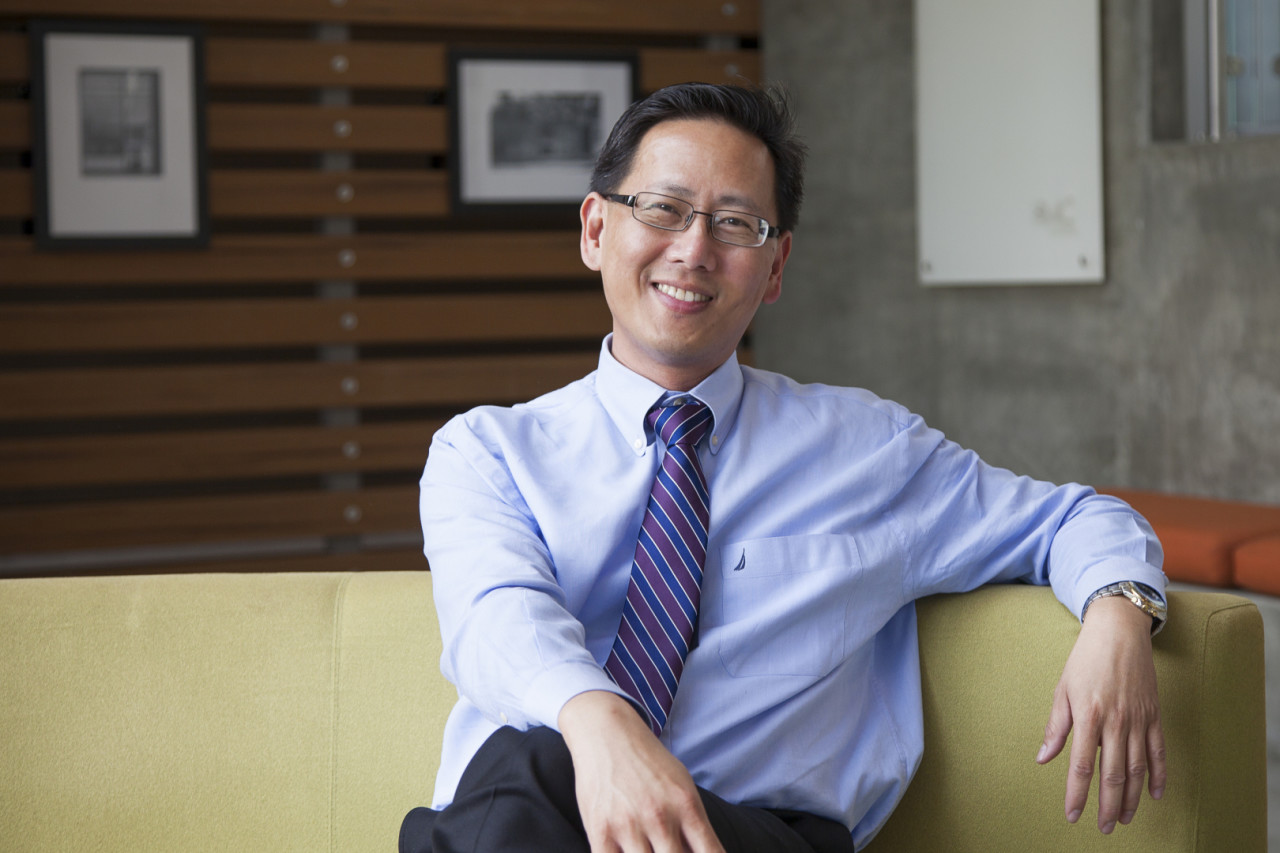We recently welcomed Gerard Lee, AIA, LEED AP BD+C, as Principal-in-Charge of the Oakland office. Gerard brings more than 21 years of experience in sustainable design with a proven track record of successful projects. He recently completed the first Living Building Challenge Net Zero Energy public library in the nation and is considered an expert in Zero Net Energy design and implementation. After sitting down with him to discuss his new role and objectives and why he joined HMC Architects, we found his passion and excitement contagious, and we think you will too.
What does your new role at HMC entail and what do you hope to accomplish?
I will be serving as the Principal-in-Charge of the Oakland office and my primary focus will be higher education and business development. Reaching out to clients and building relationships is something I truly enjoy. One of my long-term goals will be to expand outside of California State Universities and community colleges and into the University of California system as well as private universities. Although higher education will be my primary focus, I strongly believe that if you have the right story to tell and the right team to tell the story, any project or client is possible. There are endless opportunities and I am just trying to find a way to get to them.
How do you see the architecture profession evolving, and where do you see us going?
The architecture industry is evolving and we need to be smart about it. Because of alternative delivery methods, we have lost much of the control we once had. However, I believe we can get some of that control and market share back by learning how to position ourselves as industry and knowledge leaders. Functioning as your traditional architecture firm (chasing down RFPs and looking for partners to chase projects) is standard right now, but it’s not the way to be if you want to survive and if you want to successfully move forward into the future. It’s imperative to explore all ideas and do your best to position yourself for them.
What do you feel are the biggest challenges facing the higher education market and how can architects help clients face those challenges?
Funding is the biggest challenge facing higher education. Enrollment at community colleges is at an all-time high and they need new facilities to accommodate the growing student body. With the State reluctant to fund community colleges, they are forced to rely on bond measures in order to fund the needed facilities. Because not all communities can support multiple bond measures every four to eight years, community colleges have to be smart about how they manage their finance and revenue streams. California State Universities have the most difficult problem. They cannot rely on bond measures, they aren’t research facilities so they don’t qualify for grants, they don’t receive significant alumni donations, and they don’t have corporate partnerships. Architects can help these clients by coming up with solutions that will help them fund their facilities and meet their needs. Many of the issues facing our clients are going to be issues we face ourselves unless we become their knowledge and solution leaders by meeting those challenges ahead of time.
What motivated you to join HMC and why was it a good fit?
I was approached by more than 10 firms, but after interviewing at HMC Architects I felt an immediate connection to the people and it was a great cultural fit. What really intrigued me was the sense of collaboration. It wasn’t just a word they threw around like all the other firms out there. I could actually see it in the way they expressed themselves and the way they interacted. Now that I am here, I feel supported and never feel like I’m on my own. Everyone is working together, everyone is communicating, everyone is reviewing each other’s work, everyone has ideas, and everyone is trying to do the best work possible. I felt the collaborative spirit right away, and I am experiencing it now.
What is your ultimate goal when it comes to your work and what do you want to be remembered for?
I want to be remembered for doing what is best for the client, what is best for my firm, and for producing good work. I not only want to do my best, I want to do what’s right. If you do something that is right, it’s going to be good. That’s what I want to be remembered for.

